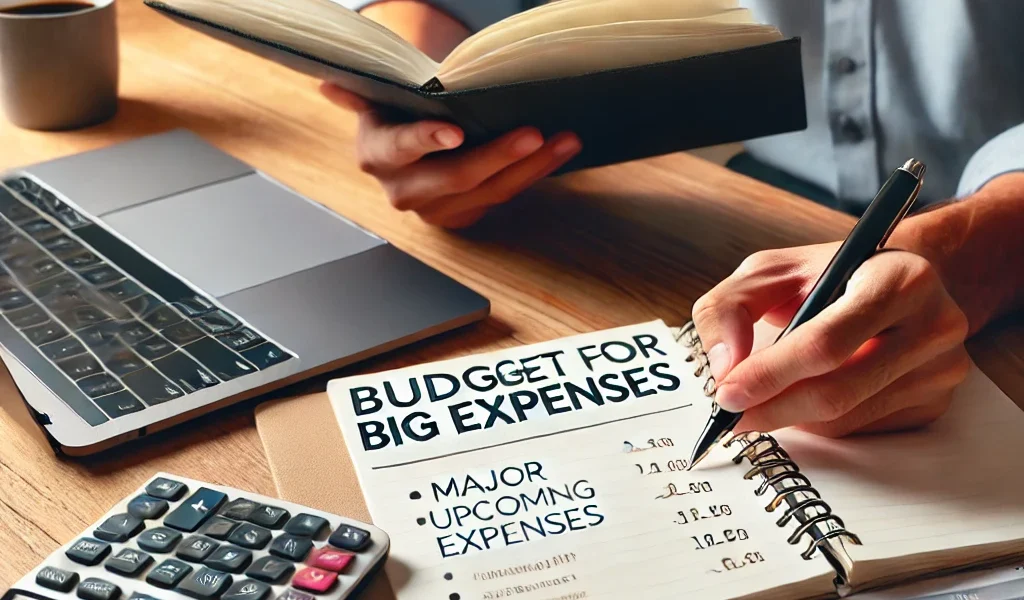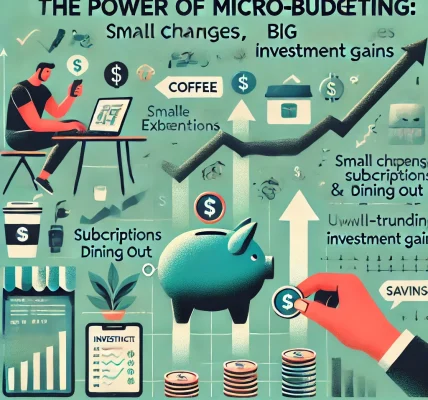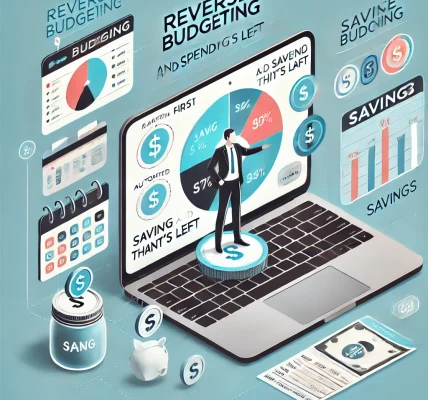Managing large expenses can be overwhelming, especially when they arise unexpectedly. Whether it’s a major home repair, a dream vacation, a wedding, or buying a new car, these expenses can strain your finances if you’re not prepared. Without proper planning, many people resort to credit cards or loans, which can lead to long-term debt.
The good news is that with the right strategy, you can budget for big expenses without going into debt. In this guide, we’ll explore actionable tips to help you plan for large financial commitments while maintaining control over your finances.
Why It’s Important to Budget for Big Expenses
1. Avoids High-Interest Debt
Planning ahead helps you avoid relying on high-interest credit cards or personal loans, which can quickly accumulate interest and increase the total cost of your expense.
2. Reduces Financial Stress
Knowing that you’ve planned for upcoming expenses gives you peace of mind and reduces financial anxiety.
3. Improves Long-Term Financial Health
By budgeting for large expenses, you maintain control over your finances, allowing you to achieve long-term financial goals.
4. Gives You More Control and Flexibility
When you plan ahead, you have more flexibility in choosing payment options, negotiating better deals, and avoiding last-minute financial surprises.
Step-by-Step Guide to Budgeting for Big Expenses
Step 1: Identify and Prioritize Upcoming Expenses
Start by listing any big expenses you anticipate over the next 6 to 12 months. Some common examples include:
- Home renovations or repairs
- Medical bills or procedures
- Vacations or travel
- Buying a new vehicle
- Educational expenses or tuition
- Holiday shopping or major celebrations
🎯 Pro Tip: Break down your list into “essential” and “non-essential” expenses to prioritize effectively.
Step 2: Estimate the Cost of Each Expense
Research the estimated cost for each expense and create a realistic budget. If possible, get quotes or price estimates to understand how much money you’ll need.
✅ Pro Tip: Add a 10–20% buffer to account for unexpected costs or price fluctuations.
Step 3: Set a Timeline and Deadline
Determine when each big expense is due and set a realistic timeline to save the required amount. The longer you give yourself to save, the smaller the monthly amount you’ll need to set aside.
📅 Pro Tip: Use a savings goal calculator to determine how much you need to save each month to meet your deadline.
Step 4: Create a Dedicated Savings Fund
Open a dedicated savings account specifically for large expenses. This ensures that the money is kept separate from your regular spending and reduces the temptation to use it for other purposes.
🏦 Pro Tip: Consider using a high-yield savings account or a money market account to grow your savings faster.
Step 5: Automate Your Savings
Automate regular contributions to your savings account by setting up automatic transfers from your checking account.
🔄 Pro Tip: Treat your savings like a monthly bill to ensure consistency and avoid skipping contributions.
Step 6: Cut Back on Discretionary Spending
To accelerate your savings, look for areas where you can reduce discretionary spending. This might include cutting back on dining out, entertainment, or subscription services.
🍽️ Pro Tip: Allocate the money you save from cutting expenses directly into your dedicated fund.
Step 7: Explore Additional Income Streams
Consider boosting your income by taking on a side hustle, freelancing, or selling unused items. This extra income can go directly toward your big expense savings.
💼 Pro Tip: Set specific goals for any additional income to stay motivated.
Practical Budgeting Methods for Big Expenses
1. Sinking Fund Method
A sinking fund is a dedicated savings account where you regularly deposit money over time to cover a future expense.
- Divide the total cost by the number of months until the expense is due
- Contribute that amount monthly until you reach your goal
📊 Example: If you need $2,400 for a vacation in 12 months, save $200 per month.
2. Zero-Based Budgeting (ZBB)
With zero-based budgeting, you allocate every dollar of your income to specific categories, ensuring that nothing is left unaccounted for. Include a category specifically for big expenses.
📈 Pro Tip: Review and adjust your budget monthly to reflect any changes in your income or expense goals.
3. 50/30/20 Budgeting Rule
This method allocates 50% of your income to needs, 30% to wants, and 20% to savings or debt repayment. Use part of the 20% allocation to build your fund for big expenses.
📊 Pro Tip: Adjust the percentages based on your financial priorities to save faster.
Smart Ways to Save Money for Big Expenses
1. Use Windfalls and Bonuses Wisely
When you receive unexpected income, such as a tax refund, work bonus, or gift, allocate a portion toward your big expense savings.
🎁 Pro Tip: Consider splitting windfalls between savings, debt repayment, and fun spending.
2. Cut Subscription Services You Don’t Use
Audit your subscriptions and cancel services that you no longer use. Redirect the money you save into your big expense fund.
📱 Pro Tip: Use subscription management apps to identify recurring charges.
3. Limit Impulse Purchases
Avoid making impulse purchases by sticking to your budget and tracking your spending.
🛒 Pro Tip: Use a 24-hour rule for non-essential purchases to avoid impulse spending.
4. Use Cashback and Rewards Programs
Leverage cashback credit cards and rewards programs to accumulate savings on everyday purchases.
💳 Pro Tip: Redeem cashback rewards and transfer them directly to your savings fund.
Mistakes to Avoid When Budgeting for Big Expenses
1. Underestimating Costs
Failing to account for hidden costs or price increases can leave you short on funds. Always add a buffer to your estimated expenses.
2. Relying on Credit Without a Plan
Using credit cards to cover big expenses without a repayment plan can lead to debt accumulation.
3. Not Adjusting Your Budget
Failing to adjust your budget as circumstances change can derail your progress.
4. Neglecting Emergency Savings
Ensure that you maintain a separate emergency fund while saving for big expenses to avoid dipping into those funds for unforeseen situations.
Benefits of Budgeting for Big Expenses
1. Avoids Debt and Interest Payments
By planning ahead, you can avoid costly interest payments associated with loans or credit cards.
2. Gives You More Control Over Your Finances
Proactive budgeting puts you in charge, giving you the freedom to make informed financial decisions.
3. Prepares You for Unexpected Costs
A solid savings plan provides a buffer against unexpected financial surprises.
Conclusion
Budgeting for big expenses doesn’t have to be stressful or overwhelming. By planning ahead, creating a dedicated savings plan, and cutting back on unnecessary spending, you can achieve your financial goals without resorting to debt. Start today by identifying your upcoming expenses and setting realistic savings goals to ensure a financially secure future.




